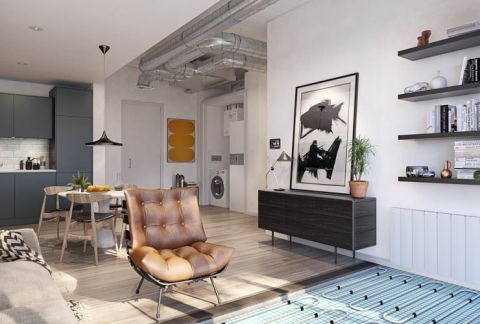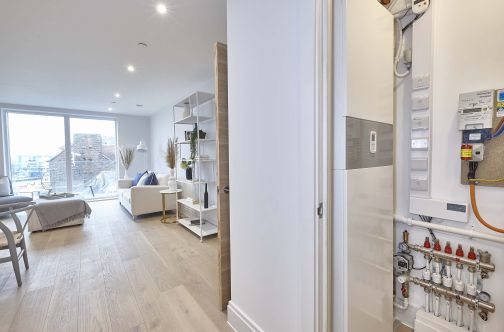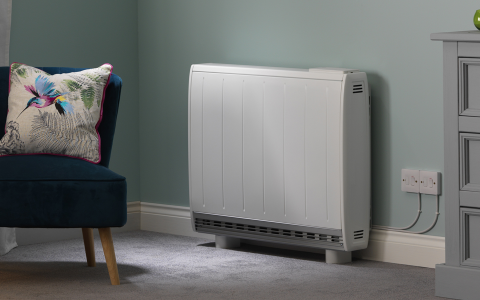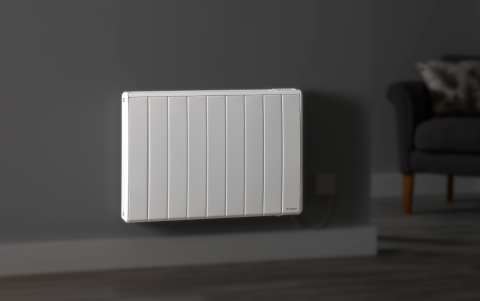
How do ambient networks that use in-apartment heat pumps work?

Can in-apartment heat pumps on ambient networks improve energy efficiency and reduce the CO2 emissions of a development?
The innovative Zeroth Energy System is an ambient temperature loop designed in collaboration with leading developers to help overcome some of the challenges of modern construction, including overheating and compliance.
The temperature of the central energy network, set at around 25oC, helps to reduce distribution heat losses in the distribution pipework of large residential developments. When compared to traditional high-temperature systems, the thermal losses in the distribution network can be reduced by up to 90%.
The lower temperature of the distribution network makes integration with low carbon heating technologies, such as air source or ground source heat pumps, for central plant easier. In areas where a District Heating Network (DHN) connection is preferred, the Zeroth Energy System can use heat exchangers to facilitate the connection to this energy source. This means that through renewable energy use at a plant level, and waste energy reduction within the building, the Zeroth Energy System can provide a significant contribution towards carbon reduction targets.
What are the benefits of the Zeroth Energy System for a modern residential or mixed-use development?
Aside from high-efficiency and its ability to reduce CO2 emissions of developments, there are further practical benefits of the Zeroth Energy System:
- More usable space – comprises a smaller central plant footprint, one infrastructure for heating, cooling and hot water delivery, potentially smaller and fewer pipes for distribution, and the size of the in-apartment unit is compact. These features help to free up valuable space in buildings
- Lower capital investment – typically requires less infrastructure and has the potential to reduce expenses elsewhere in the building, for example in insulation and installation
- Reduced occupant bills - the high efficiency of the system can translate to lower energy costs for the end-user
- Reduced cost of maintenance - the use of a non-flammable refrigerant eliminates the requirement for mandatory maintenance and reduces overall maintenance costs
- Acoustics - the system has low sound pressure and sound power output ensuring a quieter operation when compared to comparable systems on the market. This contributes to improved occupant comfort
To find out more about how the Zeroth Energy System works and how it can benefit your residential or mixed-use development, contact our HVAC specialist.
How to specify the right heat pump for your residential project: Project design and site constraints
This blog is focussed on the considerations around site constraints that should be considered by Mechanical and Electrical (M&E) consultants and other building professionals when specifying heat pumps for residential projects. It is taken from the white paper ‘A technical guide to the specification of heat pumps for single dwellings and multi-occupancy residential or mixed-use developments’ to give you a taste of just one of the many important areas that can influence specification choices covered in this comprehensive white paper.
5 mins read










